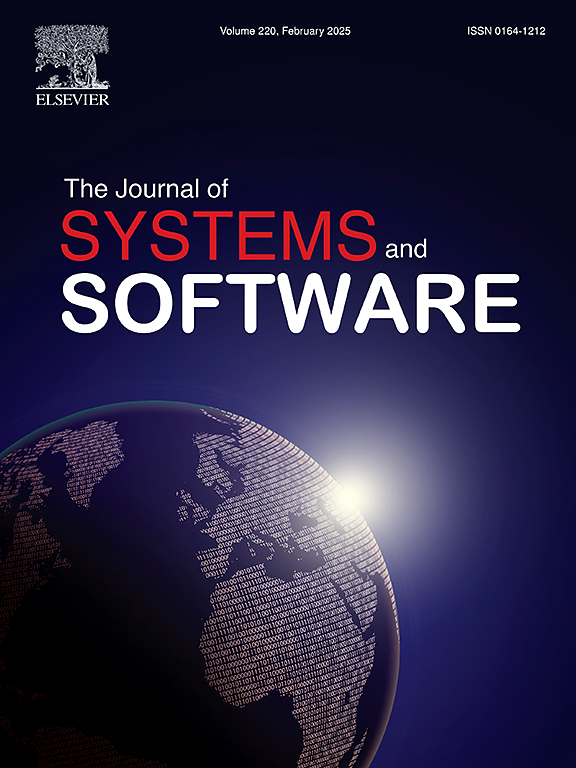动态自适应系统中的组合过渡测试:实现和测试甲骨文
IF 3.7
2区 计算机科学
Q1 COMPUTER SCIENCE, SOFTWARE ENGINEERING
引用次数: 0
摘要
由于动态自适应系统的功能之间可能存在大量的交互和转换,因此测试这类系统面临着巨大的挑战。为了验证这类系统的行为是否正确,组合交互测试(CIT)可以创建简洁的测试套件,涵盖这类系统的所有有效特征对。虽然组合交互测试(CIT)声称能发现由两个特征引起的所有错误,但它并不涵盖仅在特征之间的特定转换时才会出现的某些错误。为了解决这个问题,我们研究了组合转换测试(CTT)技术,其中包括生成和检测我们称之为行为转换错误的技术。最初的生成算法结合了交互和转换覆盖范围,但缺乏可扩展性,因此我们提出了一个优化版本,甚至可以对数百个特征进行 CTT。从覆盖所有转换的有效测试套件出发,我们通过测试甲骨文完成了测试方法,该甲骨文可在不预先了解系统行为的情况下检测出所有行为转换错误。在对大量特征模型进行综合分析后,我们得出结论:CTT 生成的测试套件的大小和使用我们的测试神谕所需的测试工作量与 CIT 生成的测试套件呈线性相关,CTT 随特征数量的增加而呈对数增长。本文章由计算机程序翻译,如有差异,请以英文原文为准。
Combinatorial transition testing in dynamically adaptive systems: Implementation and test oracle
Due to the large number of possible interactions and transitions among features in dynamically adaptive systems, testing such systems poses significant challenges. To verify that such systems behave correctly, combinatorial interaction testing (CIT) can create concise test suites covering all valid pairs of features of such systems. While CIT claims to find all errors caused by two features, it does not cover certain errors occurring only for specific transitions between features. To address this issue we study the technique of Combinatorial Transition Testing (CTT), which includes both generation and detection of what we call behavioural transition errors. From an initial generation algorithm that combines both interaction and transition coverage but lacks scalability, we propose an optimised version that enables CTT even for hundreds of features. From a valid test suite covering all transitions, we complete our testing approach with a test oracle that detects all behavioural transition errors without any prior knowledge of the system’s behaviour. After a comprehensive analysis over a large number of feature models, we conclude that size of CTT-generated test suites and test effort needed to use our test oracle are linearly correlated to CIT-generated ones and that CTT grows logarithmically in the number of features.
求助全文
通过发布文献求助,成功后即可免费获取论文全文。
去求助
来源期刊

Journal of Systems and Software
工程技术-计算机:理论方法
CiteScore
8.60
自引率
5.70%
发文量
193
审稿时长
16 weeks
期刊介绍:
The Journal of Systems and Software publishes papers covering all aspects of software engineering and related hardware-software-systems issues. All articles should include a validation of the idea presented, e.g. through case studies, experiments, or systematic comparisons with other approaches already in practice. Topics of interest include, but are not limited to:
•Methods and tools for, and empirical studies on, software requirements, design, architecture, verification and validation, maintenance and evolution
•Agile, model-driven, service-oriented, open source and global software development
•Approaches for mobile, multiprocessing, real-time, distributed, cloud-based, dependable and virtualized systems
•Human factors and management concerns of software development
•Data management and big data issues of software systems
•Metrics and evaluation, data mining of software development resources
•Business and economic aspects of software development processes
The journal welcomes state-of-the-art surveys and reports of practical experience for all of these topics.
 求助内容:
求助内容: 应助结果提醒方式:
应助结果提醒方式:


